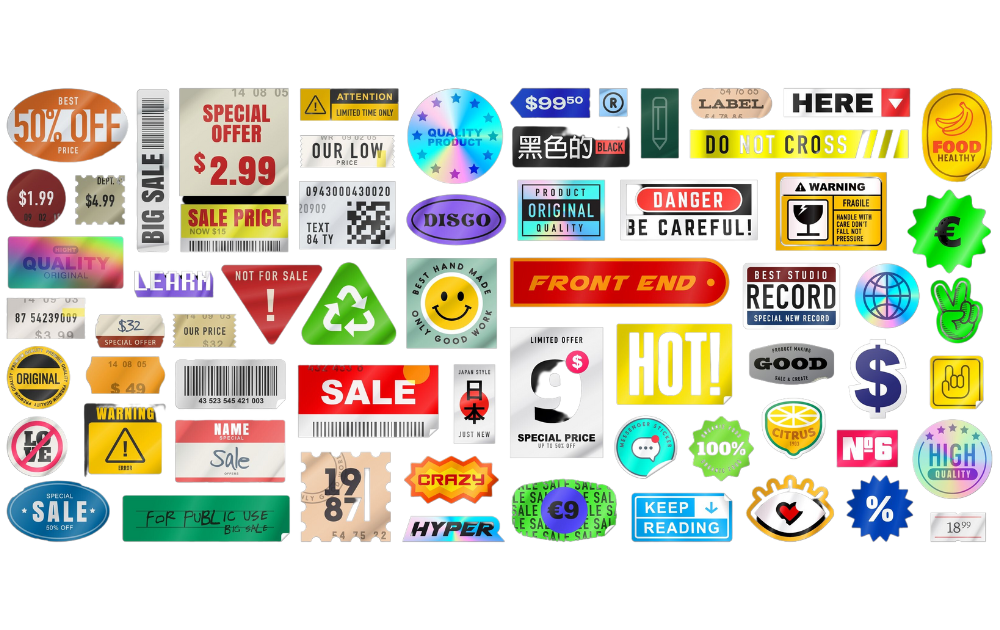In a world of print full of possibilities, there are two ways labels are printed to delight us with their captivating messages. While both methods have their pros and cons, understanding the differences between the two can help you determine which one is best suited for your business.
Direct thermal printing for easy-to-use, versatile and cost-effective labels
Direct thermal printing is a specialised process that uses a thermal print head to selectively heat areas of the paper that are coated with a heat-sensitive layer. Images are formed in the area exposed to heat. Printing on direct thermal labels does not require a ribbon, making these labels easier to use and cost-effective.
Monochrome direct thermal labels can be printed using this method, but some labels also allow colour printing.
Direct thermal printing is often used for short-term applications such as shipping labels (AWB), event receipts and tickets, and scale labels.
Among the main advantages of using the method:
- Cost-effective: direct thermal printing requires no ribbon or ink, making it a more cost-effective option for short-term printing needs
- Ease of use: Direct thermal printers are easy to set up, calibrate and require minimal maintenance
Sustainability: Due to the materials used and the lack of ribbon, direct thermal labels are more environmentally friendly - Direct thermal labels are ideal for companies that need to print labels quickly and efficiently without using ribbon. So in industries such as retail, logistics and transport, food, healthcare and pharmaceuticals, direct thermal labels can be used successfully as they meet specific requirements.
Direct thermal labels are less resistant to mechanical interactions and exposure to sunlight or high temperatures can make them very difficult to read.
Thermal transfer printing: quality, durable and diverse labels
Thermal transfer printing is a method that uses a ribbon to transfer ink onto a label or other material (e.g. textile label). This method works by heating the print head and transferring the ink onto the substrate, creating a high-quality image. The process allows precise colour control and produces high-quality, long-lasting prints.
Thermal transfer printing is often used for applications that require strength and durability, such as product labels and asset tags.
The advantages of using this method:
- Durability: Thermal transfer prints are resistant to fading, staining and other types of damage, making them ideal for long-term applications
- Versatility: can be used with a wide range of media options, including paper, polyester and vinyl
- Quality: text, images or barcodes can be printed at high resolution
Thermal transfer labels can be used by companies that need optimal long-term results. Thus, industries with more demanding environments, where there are also external factors that can lead to label damage, successfully use the thermal transfer printing method for labels.
Whichever printing method you choose, both thermal transfer and direct thermal labels have the power to communicate messages and beautify products and packaging. Each has its distinct advantages and features, so you can choose according to your needs and preferences.
We know that a label can contribute to the success of your product. That’s why we at Zinta take every order seriously, putting passion into what we do, so your business always benefits from professional, quality labels. We have the knowledge and technology to always deliver quality service. Whether you need simple labels printed in small quantities or durable labels needed in industrial processes, Zinta is the partner that can deliver quickly and efficiently.
Zinta labels accurately reflect your brand identity!



